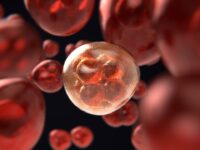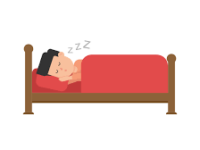Around once a month, I have a day where nothing seems to go right. I can’t focus, everything is irritating, and all I want to do is sit in bed eating ice cream alone. I first noticed this pattern around age 14 and thought it meant I was about to start my period, but menstruation would never directly follow this 24-hour window. In fact, this day would fall right in between periods. It wasn’t until I started tracking my periods that I realized this hormonal spike was correlated with ovulation. Understanding hormonal signalling in rhythmic menstrual cycles can help those who menstruate anticipate symptoms that lie ahead.
The human menstrual cycle is divided into two phases: the follicular phase and the luteal phase. The follicular phase begins on the first day of menstruation and lasts until ovulation, typically around 14 days, though sometimes longer. Menstruation occurs when the uterus sheds the endometrium, the lining of the uterus, by bleeding for three to seven days. Most people who menstruate, and indeed some who do not, know this time in the menstrual cycle well. Understanding the rest of the cycle can help identify physical and mental changes caused by hormonal processes.
To control the menstrual cycle, the hypothalamus, or hormone-controlling part of the brain, sets a rhythmic release of gonadotropin-releasing hormone (GnRH) to the pituitary gland at different rates depending on the phase of the menstrual cycle. GnRH causes the pituitary gland to release key hormones to the ovaries and uterus.
During the follicular phase, GnRH pulses from the hypothalamus around every hour. This fast-paced pulsation signals the pituitary gland to secrete luteinizing hormone (LH) and follicle stimulating hormone (FSH) to the ovaries. LH and FSH stimulate growth of ovarian follicles, which produce estradiol as they grow. After a few days, one follicle becomes the dominant follicle that goes on to ovulate, and the rest break down in a process called follicular atresia. The dominant follicle continues to grow and produce estradiol while also secreting other hormones to suppress the growth of non-dominant follicles, ensuring there is only one ovulation per cycle. When the growth of other follicles is not blocked, a second dominant follicle is produced and ovulation occurs twice, explaining how fraternal twins come about.
GnRH causes the pituitary gland to release key hormones to the ovaries and uterus.
When the dominant follicle produces enough estradiol to sustain high levels for a 48-hour period, the hypothalamus releases large amounts of GnRH, signalling to the pituitary gland to spike production of LH and FSH. As a result of high estradiol levels, people who menstruate may experience symptoms such as migraines, increased libido, and acne. The pulse of LH activates enzymes to break down the follicular wall and stimulate ovarian muscles; this leads to ovulation as the egg is released from the ovary around 36 hours later. During ovulation, people who menstruate can experience increased body temperature, abdominal pain (from releasing the egg), and mood swings as estradiol levels crash down to baseline level. The LH surge also transforms the ovarian follicle into the corpus luteum, which assists in supporting a fertilized egg during early pregnancy. Ovulation marks the end of the follicular phase.
After ovulation, the menstrual cycle enters the luteal phase for around 14 days. During this phase, the released egg travels down the fallopian tube as the uterus prepares for fertilization. The hypothalamus stops releasing large amounts of GnRH and begins pulsing GnRH every two to four hours, resulting in pulses of LH from the pituitary gland. As a result, the presence of LH and FSH drop below their original levels from the follicular phase.
At this time, the corpus luteum, formed from the dominant ovarian follicle, begins releasing moderate amounts of progesterone and small amounts of estradiol. These hormones stimulate the endometrium to develop endometrial glands and spiral blood vessels to nourish the egg if fertilized. If pregnancy occurs, the concentration of progesterone in the uterus would increase to prevent the body from producing additional eggs. If the egg is not fertilized 9 to 11 days after ovulation, the corpus luteum begins to disintegrate, progesterone and estradiol levels drop, and the endometrium is shed in menstruation, restarting the cycle. The mechanisms that regulate release of progesterone are not completely understood, and moderate or high amounts typically do not cause symptoms.
By understanding the mechanisms that result in menstruation, those who menstruate can better anticipate symptoms that accompany these hormonal swings.
The menstrual cycle is a complex process, dictated by GnRH from the hypothalamus that stimulates the release of LH and FSH. By understanding the mechanisms that result in menstruation, those who menstruate can better anticipate symptoms that accompany these hormonal swings.
Human Fertility (2014). DOI: 10.1007/978-1-4939-0659-8_7





